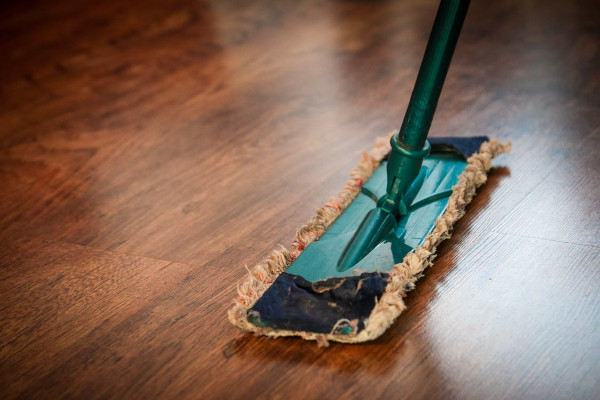How to Clean and Maintain Different Types of Flooring
Flooring plays a crucial role in the overall aesthetics and functionality of a space. Whether you have hardwood, tile, carpet, laminate, or vinyl flooring, proper cleaning and maintenance are essential to ensure its longevity and keep your home looking its best. In this article, we'll explore the best practices for cleaning and maintaining various types of flooring materials.
Hardwood Flooring
Hardwood flooring is a timeless and elegant choice for many homeowners. To keep it looking beautiful, follow these tips:
- Regular Sweeping: Use a soft-bristle broom or a vacuum with a hardwood floor attachment to remove dust and debris daily.
- Damp Mopping: Use a damp (not soaking wet) mop with a hardwood floor cleaner that is compatible with your flooring's finish.
- Avoid Excess Moisture: Water can damage hardwood floors, so never use excessive moisture when cleaning. Wipe up spills immediately.
- Protect from Scratches: Place rugs or mats at entry points to trap dirt and prevent scratches. Also, consider using furniture pads to prevent furniture from scratching the floor.
- Recoating and Refinishing: Periodically, you may need to recoat or refinish your hardwood floors to maintain their shine and protect them from wear and tear.
Tile Flooring
Tile flooring is durable and easy to maintain, but it does require some care to keep it looking its best:
- Sweeping and Vacuuming: Regularly sweep or vacuum to remove dirt and debris. Use a soft brush attachment to prevent scratching.
- Mopping: Clean with a tile and grout cleaner or a mixture of water and mild detergent. Be sure to rinse thoroughly and dry the floor to prevent water spots.
- Grout Cleaning: To clean grout lines, use a grout brush or a mixture of baking soda and water. Avoid using abrasive materials that can damage the grout.
- Sealing: Depending on the type of tile, consider sealing it to prevent stains and moisture absorption.

Carpet Flooring
Carpet flooring provides warmth and comfort but requires specific care:
- Regular Vacuuming: Vacuum your carpet at least once a week to remove dirt and dust. Use a vacuum with a HEPA filter for better air quality.
- Spot Cleaning: Address spills and stains promptly with a carpet stain remover. Blot, don't rub, to avoid spreading the stain.
- Deep Cleaning: Schedule professional carpet cleaning every 12-18 months to remove embedded dirt and allergens.
- High-Traffic Areas: Place rugs or mats in high-traffic areas to reduce wear and tear.
Laminate Flooring
Laminate flooring is affordable and easy to clean, but it can be sensitive to moisture:
- Sweeping and Vacuuming: Regularly sweep or vacuum with a soft brush attachment to remove dirt and dust.
- Damp Mopping: Use a damp mop with a laminate floor cleaner. Avoid excessive water, as it can cause the laminate to swell.
- Protection: Use furniture pads to prevent scratches and place doormats at entrances.
Vinyl Flooring
Vinyl flooring is resilient and low-maintenance:
- Sweeping and Mopping: Regularly sweep or dry mop to remove loose dirt and then damp mop with a vinyl floor cleaner.
- Stain Removal: Wipe up spills promptly and use a vinyl-specific stain remover for tough stains.
- Avoid Harsh Chemicals: Vinyl can be sensitive to abrasive cleaners, so choose gentle, pH-neutral products.
Summary
Maintaining different types of flooring requires a tailored approach, but the key principles remain the same: regular cleaning, prompt stain removal, and protection from excessive moisture and physical damage. By following these guidelines, you can ensure that your flooring remains beautiful and functional for years to come, enhancing the overall look and feel of your home.
 Cleaning Services
Cleaning Services